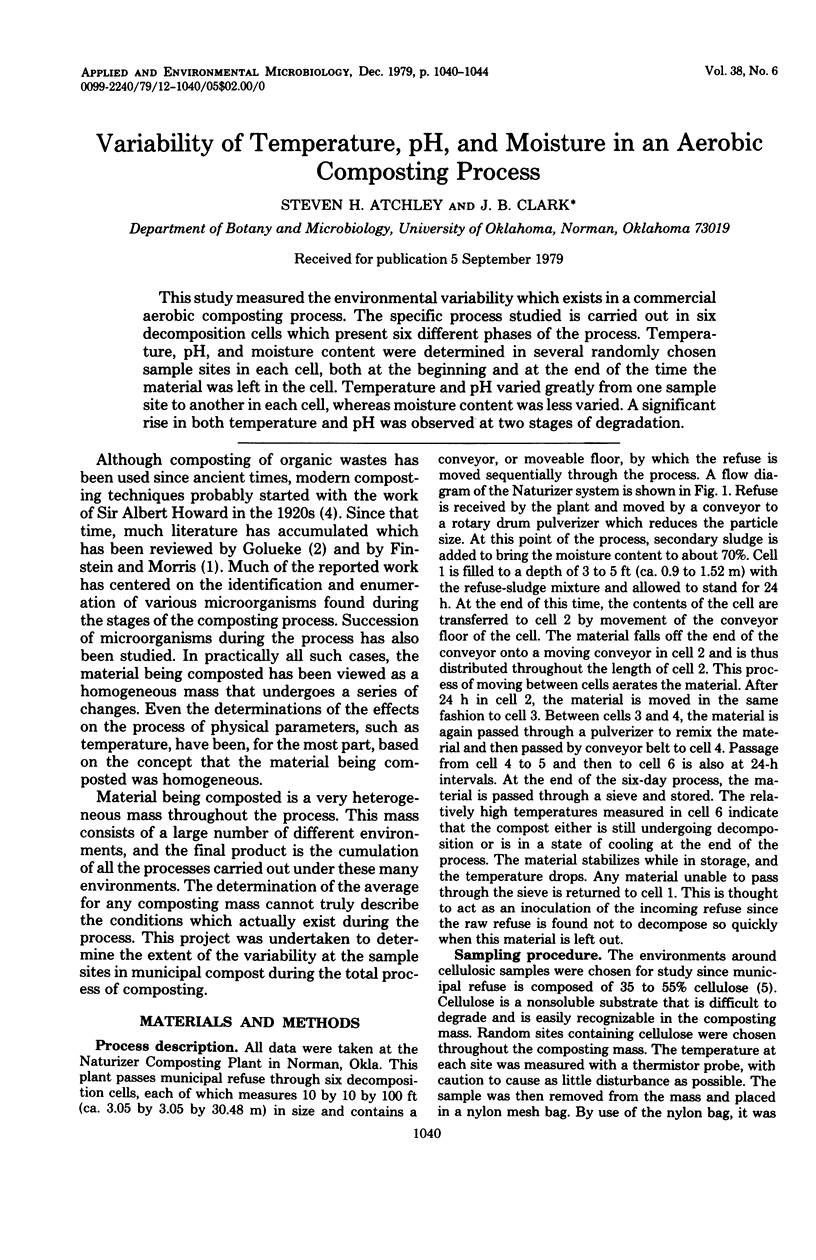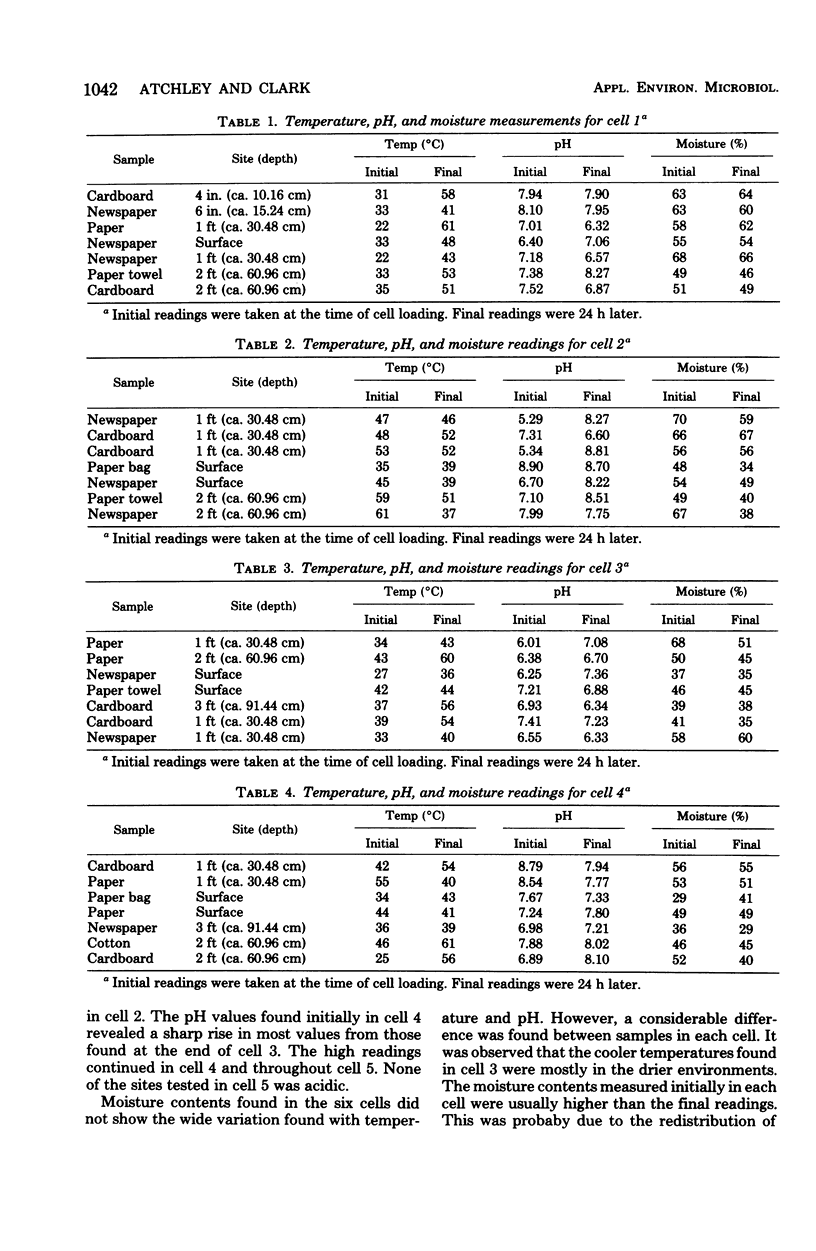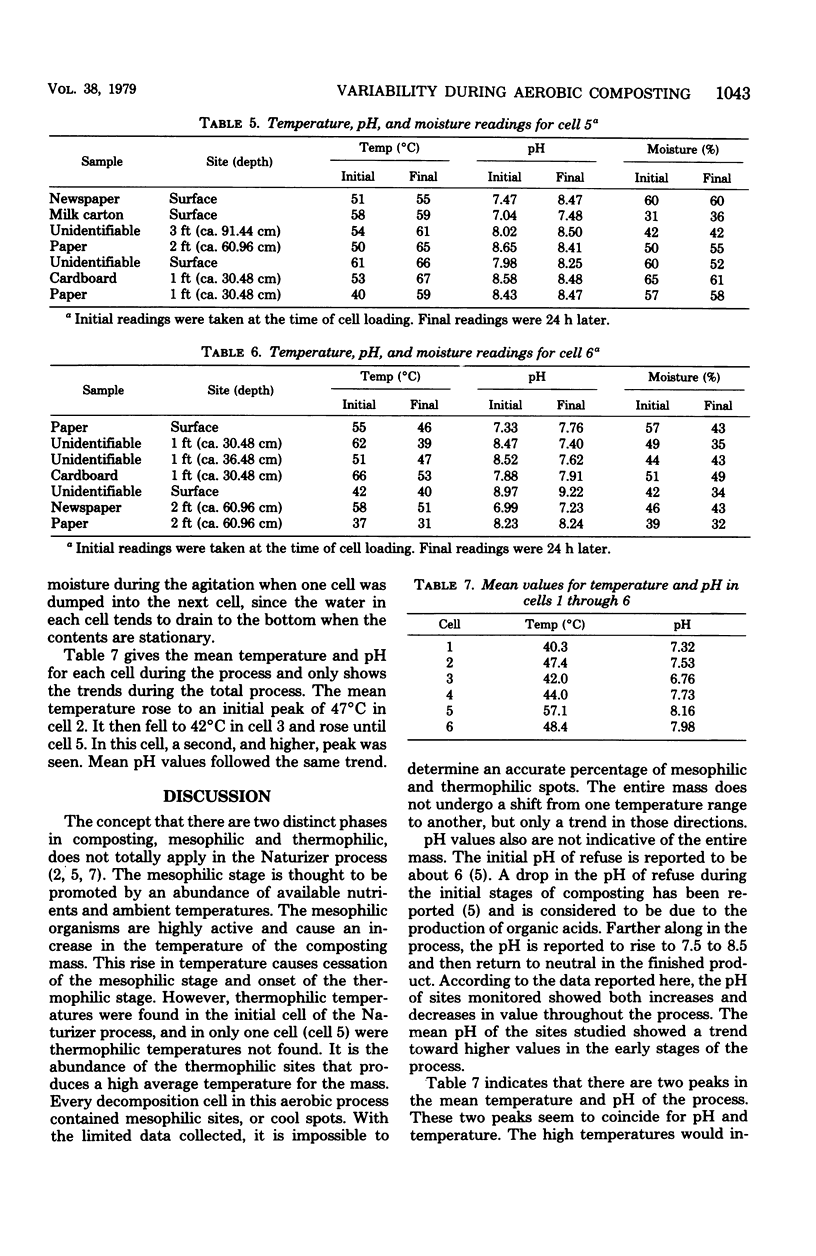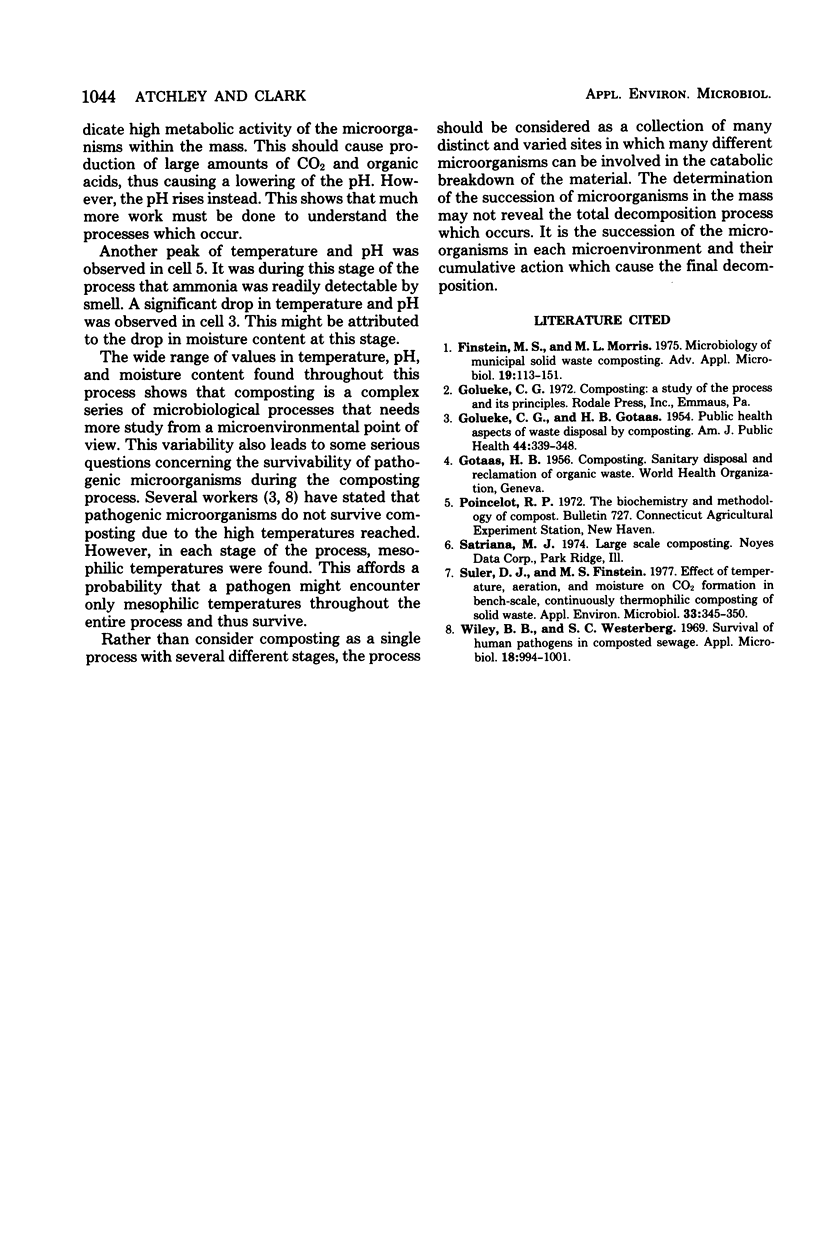Abstract
This study measured the environmental variability which exists in a commercial aerobic composting process. The specific process studied is carried out in six decomposition cells which present six different phases of the process. Temperature, pH, and moisture content were determined in several randomly chosen sample sites in each cell, both at the beginning and at the end of the time the material was left in the cell. Temperature and pH varied greatly from one sample site to another in each cell, whereas moisture content was less varied. A significant rise in both temperature and pH was observed at two stages of degradation.
Full text
PDF




Selected References
These references are in PubMed. This may not be the complete list of references from this article.
- Finstein M. S., Morris M. L. Microbiology of municipal solid waste composting. Adv Appl Microbiol. 1975;19:113–151. doi: 10.1016/s0065-2164(08)70427-1. [DOI] [PubMed] [Google Scholar]
- GOLUEKE C. G., GOTAAS H. B. Public health aspects of waste disposal by composting. Am J Public Health Nations Health. 1954 Mar;44(3):339–348. doi: 10.2105/ajph.44.3.339. [DOI] [PMC free article] [PubMed] [Google Scholar]
- Suler D. J., Finstein M. S. Effect of Temperature, Aeration, and Moisture on CO(2) Formation in Bench-Scale, Continuously Thermophilic Composting of Solid Waste. Appl Environ Microbiol. 1977 Feb;33(2):345–350. doi: 10.1128/aem.33.2.345-350.1977. [DOI] [PMC free article] [PubMed] [Google Scholar]
- Wiley B. B., Westerberg S. C. Survival of human pathogens in composted sewage. Appl Microbiol. 1969 Dec;18(6):994–1001. doi: 10.1128/am.18.6.994-1001.1969. [DOI] [PMC free article] [PubMed] [Google Scholar]


